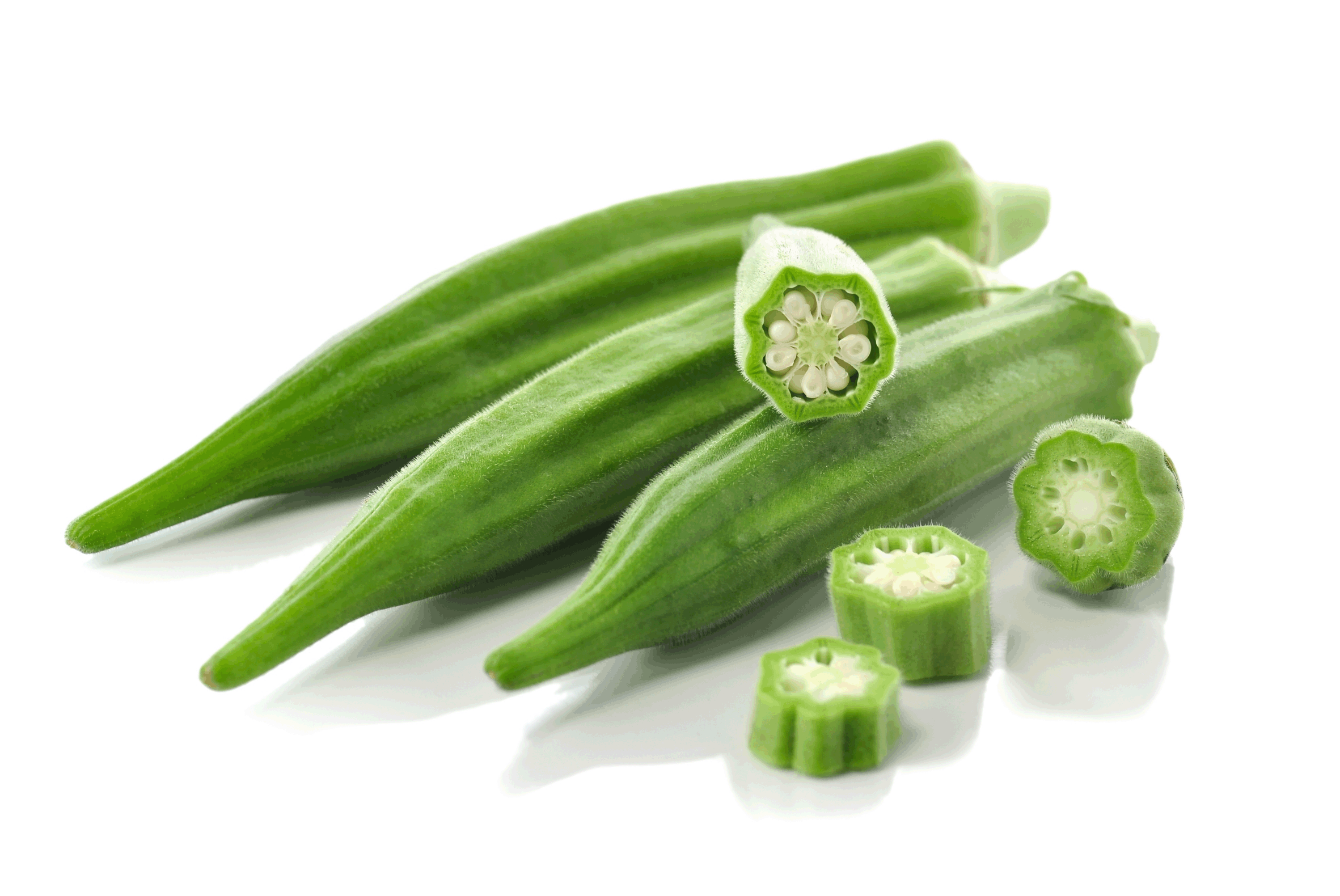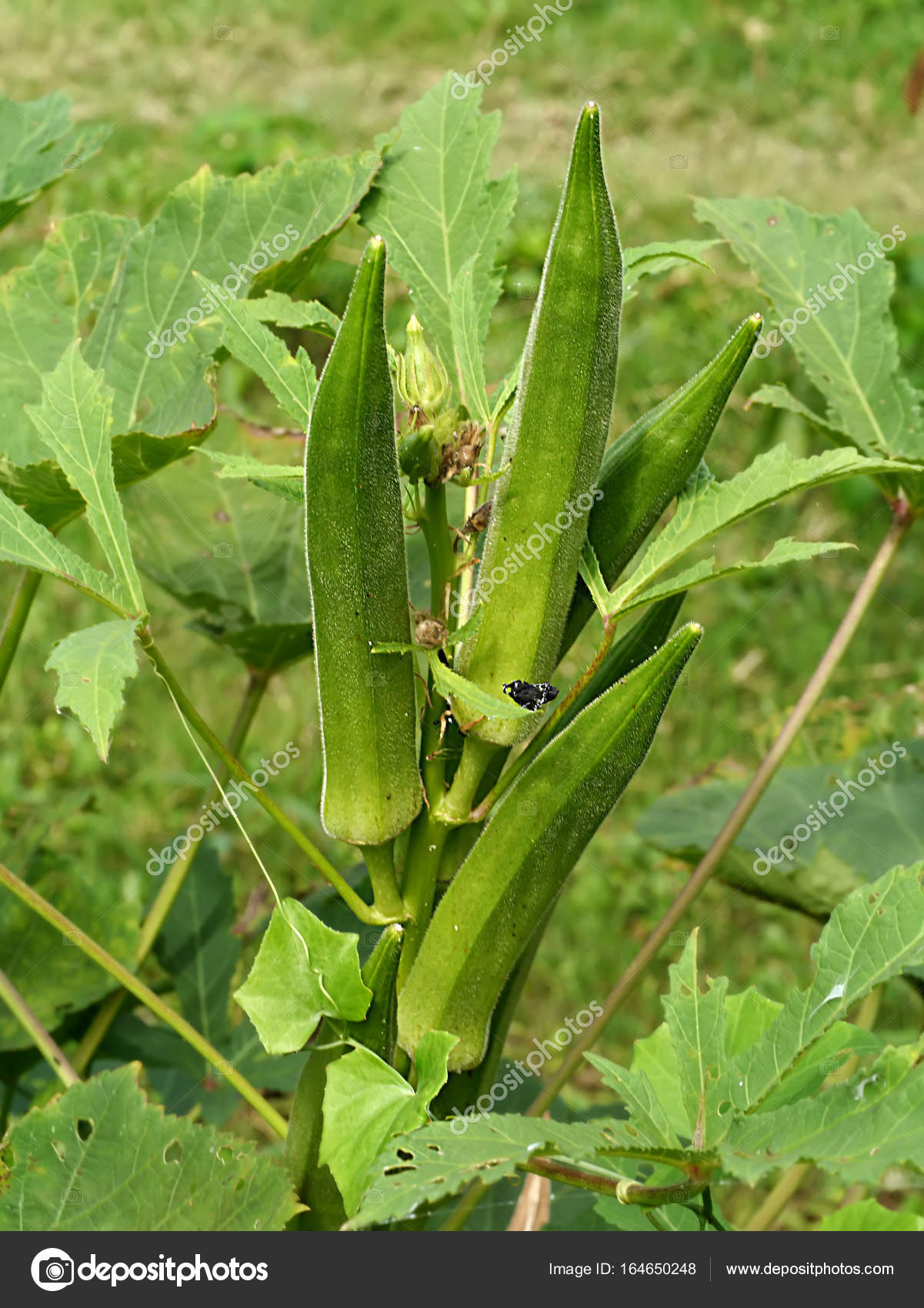

The plant may have entered southwest Asia across the Red Sea or the Bab-el-Mandeb strait to the Arabian Peninsula, rather than north across the Sahara, or from India. The Egyptians and Moors of the 12th and 13th centuries used the Arabic word for the plant, bamya, suggesting it had come into Egypt from Arabia, but earlier it was probably taken from Ethiopia to Arabia. The geographical origin of okra is disputed, with supporters of Southeast Asian, South Asian, Ethiopian and West African origins.

Truly wild (as opposed to naturalised) populations are not known with certainty, and the West African variety has been described as a cultigen. However, proposed parents include Abelmoschus ficulneus, A. tuberculatus and a reported "diploid" form of okra. Okra is an allopolyploid of uncertain parentage. Despite the fact that in most of the United States the word gumbo often refers to the dish, gumbo, many places in the Deep South may have used it to refer to the pods and plant as well as many other variants of the word found across the African diaspora in the Americas. The word gumbo was first recorded to be used in American vernacular around 1805, deriving from Louisiana Creole, but originates from either the Umbundu word ochinggômbo or the Kimbundu word ki-ngombo. The first use of the word okra (alternatively okro or ochro) appeared in 1679 in the Colony of Virginia, deriving from the Igbo word ọ́kụ̀rụ̀.

We selected these choices with all of that in mind while also trying to appeal to a wide variety of nutritional needs and taste buds.Abelmoschus is New Latin from Arabic أَبُو المِسْك (ʾabū l-misk, “father of musk”), while esculentus is Latin for being fit for human consumption. Some of those foods might fall into conventional ideas of what “healthy” is. But we’re also talking about foods that help you connect with your culture, promote joy, and simply taste delicious. At SELF, when we talk about food being healthy, sure, we’re talking about foods that are nutritious, filling, and satisfying. Not only can it mean different things to different people, but it’s a word that’s pretty loaded (and sometimes fraught), thanks to the diet industry’s influence on the way we think about food. Keep them within arm’s reach of your home (or office) workspace, or in the kitchen as an excuse to get up and stretch your legs for a minute.Ī quick note about the word healthy here before we get into the snacks: We know that healthy is a complicated concept. Basically, there’s a little bit of everything, so that you can find snacks to suit your tastes, dietary needs, and budget-even road trip snacks for all your summer traveling!Ĭhoose two (or three!) from this list for a more filling combination snack, and mix it up so you get a nice variety of nutrients, flavors, and textures- protein and carbs, salty and sweet, creamy and crunchy-to keep your snack game fresh.
#Pictures of okra plus#
There are general recommendations for snack-worthy foods as well as specific healthy snacks to buy, plus a few ideas for homemade snacks you can batch-prep if you’re so inclined.
#Pictures of okra full#
This list is full of convenient and healthy snack ideas, including the personal favorites of a few RDs and a bunch of our own picks. “Having protein with carbohydrates or fat and protein can help keep you feeling fuller for longer,” she explains. And while sometimes all you want is a little nibble, Phoenix-based dietitian Rhyan Geiger tells SELF that including at least two different food groups (starches, fats, proteins, or fruits/vegetables) will result in a more substantial snack. So, what should you look for in a really awesome snack? Generally, an energizing and sustaining snack is going to have some nutritional staying power in the form of protein, fat, and/or fiber, Toronto-based registered dietitian Abbey Sharp, RD, has previously told SELF. In addition to all that, good snacks are also kind of like a mini-break for your mind and treat for your senses, and they can give you that little burst of joy you need to get through the toughest work moments. A nutritious little midmorning or afternoon munch can provide the fuel top-off you need to stay focused until mealtime. When your stomach’s rumbling, having healthy snacks at the ready takes on even greater importance, whether you’re powering through the WFH or office grind, on a road trip, or simply spending some leisure time at home.


 0 kommentar(er)
0 kommentar(er)
